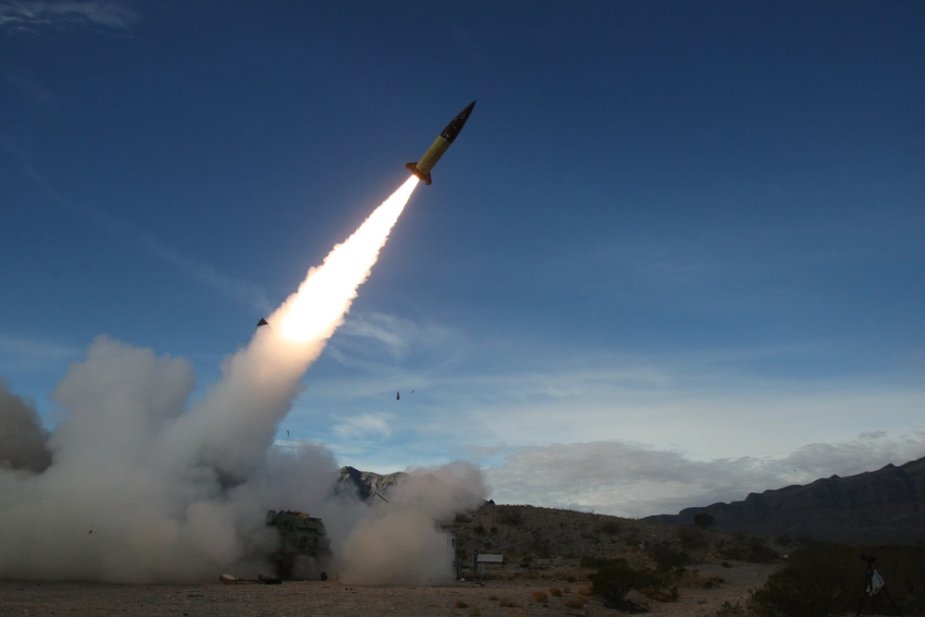Recently, the ATACMS missiles have been in the spotlight as the Joe Biden administration is reportedly leaning towards sending them to Ukraine, as previously reported on Army Recognition on June 30, 2023. But do the Ukrainians have the capability to use them? What are the characteristics of these missiles? If you're a bit confused, here's a summary of what we know about the American missile.
Follow Army Recognition on Google News at this link

Army Tactical Missile System ATACMS (Picture source American Department of Defense )
The Army Tactical Missile System (MGM-140 ATACMS) is a short-range tactical ballistic missile system developed by the United States Army. The development of the ATACMS began in the late 1970s in response to the growing need for a highly mobile and accurate tactical ballistic missile system to support the US Army's field operations. The objective was to provide a long-range precision strike capability to engage high-value targets such as enemy command and control centers, air defense systems, and other strategic assets.
The US Army awarded a contract to Martin Marietta (now Lockheed Martin) in 1986 to develop the ATACMS. The missile's development focused on precision, mobility, and minimizing collateral damage. The design incorporated a solid rocket motor and GPS/INS guidance, which allowed for highly accurate targeting and reduced the risk of causing unintended damage to civilian infrastructure. The first flight test of the ATACMS was conducted in 1988, and the missile successfully hit its target. The Army Tactical Missile System can be launched from two primary mobile platforms, the tracked MLRS M270 and the HIMARS M142 mounted on an FMTV wheeled truck chassis.
The ATACMS MGM-140 features a cylindrical body with a tapered conical nose cone at the front. This design enhances the missile's aerodynamic properties, reducing drag and enabling stable flight. The streamlined nose cone minimizes air resistance and houses the missile's guidance system and payload. At the rear of the missile, there are four fins that provide aerodynamic stability and control during flight, ensuring the missile stays on its intended trajectory.
The Army Tactical Missile System MGM-140 utilizes a solid rocket motor for propulsion, which offers several advantages over liquid-fueled systems. Solid rocket motors are more reliable due to having fewer moving parts and a lower likelihood of leaks and failures. They also provide a quicker response time as they can be ignited rapidly, which is crucial for time-sensitive missions in rapidly changing battlefield scenarios. Furthermore, solid rocket motors require less maintenance compared to their liquid-fueled counterparts, making them more suitable for field deployment and reducing the need for extensive support infrastructure. Lastly, solid propellants are generally less hazardous than liquid propellants, minimizing the risk of accidents during handling, transport, and storage.
The ATACMS can be equipped with different types of warheads depending on the specific variant and mission requirements. The primary warhead types include unitary warheads and cluster munitions. Unitary warheads are designed for precise strikes against hardened high-value targets, carrying a single high-explosive charge that detonates upon impact, causing significant damage. Variants such as the MGM-140B Block IA and the MGM-168 Block IVA use unitary warheads for enhanced accuracy and reduced collateral damage compared to cluster munitions. Cluster munition warheads contain multiple smaller submunitions that disperse over a target area upon reaching the designated altitude. This type of warhead is suitable for attacking area targets or engaging multiple targets within a target area. It's important to note that cluster munitions have been criticized for their potential to cause unintended harm to civilian populations and unexploded ordnance.
The Army Tactical Missile System MGM-140 ATACMS can also deploy a sophisticated guidance system that combines GPS and INS (Inertial Navigation System) technologies. This integration ensures precise navigation and targeting. The GPS receiver calculates the missile's position using signals from multiple GPS satellites, guiding it toward the target throughout its flight. The INS, on the other hand, is a self-contained navigation system that measures the missile's motion and orientation using accelerometers and gyroscopes. It provides continuous real-time guidance data, unaffected by external signals or interference, ensuring accurate targeting.
The Ukrainian military has the necessary equipment to use ATACMS missiles, including the well-known HIMARS launcher and several M270 MLRS systems provided by Norway. However, Ukrainian soldiers have not yet had the opportunity to train with and operate the ATACMS missiles. This means that despite having the appropriate equipment, Ukrainian forces will require some time to adapt to the new capabilities. Today, not all Ukrainian equipment has a range equivalent to that of the ATACMS, so its arrival could greatly increase the Ukrainians' ability to strike behind the Russian lines.
The delivery of ATACMS missiles to Ukraine by the US government would be a significant development in the Russo-Ukrainian conflict. However, Washington continues to express reluctance in sending such weapons, as the Biden administration fears that it could escalate the conflict.
The ATACMS missile system offers advanced technical features that make it a precise, reliable, and effective tactical ballistic missile system. Its aerodynamic design, solid rocket motor propulsion, various warhead options, and sophisticated guidance system contribute to its performance and effectiveness on the battlefield. While the deployment of ATACMS missiles in Ukraine remains uncertain, their potential inclusion would represent a significant shift in the balance of power in the ongoing conflict.















